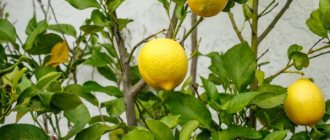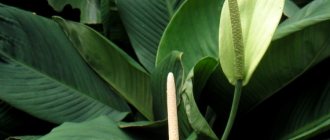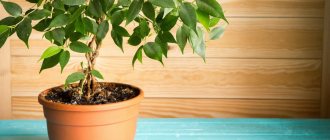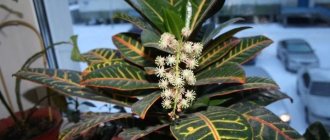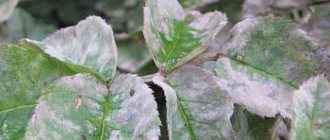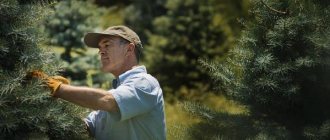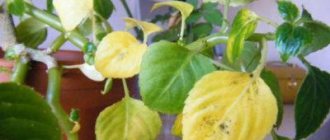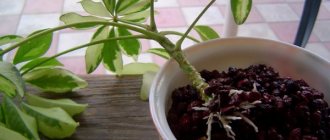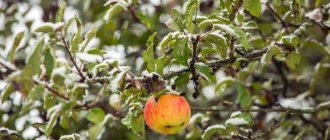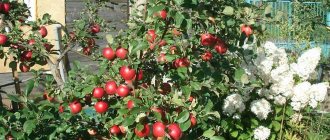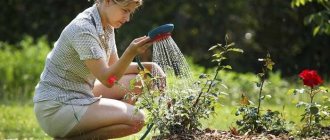Possible reasons
You need to monitor the condition of peppers daily, not only at the stage of growing seedlings. If you notice in time that the leaves have changed color, shape, or have completely fallen green, you can have time to take a set of necessary measures to eliminate leaf fall.
Agrotechnical errors
Gross violations in agricultural technology always affect the health of plantings. Proper care is important not only for young seedlings, but also for adult plants.
With insufficient and infrequent watering, the pepper “informs” about the lack of water by its appearance. The leaves of the lower tier begin to turn yellow and fall off. If it gets too dry, the whole plant “hangs” and sheds its buds and ovaries.
Severe stagnation of water and lack of air access to the root system prevent normal air exchange between the roots and the crown. In such a situation, the roots begin to rot. Brown and black spots often appear on leaves, petioles and stems. The problem is most common in growing seedlings.
The problem can be caused by a deficiency of mineral nutrition:
- the plant reacts to a lack of nitrogen by yellowing leaves with white spots;
- with potassium deficiency, the leaf blade turns yellow along the edge, becomes deformed and curls down;
- if the plant lacks phosphorus, the surface of the leaf turns yellow, but the veins remain green;
- Lack of iron causes yellowing of the upper leaves. With severe chlorosis, the leaves fall off.
Against the background of general starvation, not only the leaves of the pepper fall off, but also the ovaries.
Watering with running water from a hose has a negative impact on his health. Because of this, the root system becomes severely overcooled and rots. The leaves turn yellow and fall off, starting from the lower tier.
Pepper does not like to grow in close quarters. If the planting is too thick, the roots of the seedlings become entangled with each other, deprived of the necessary air, water, nutrition and rot. To survive in such conditions, plants are forced to shed excess leaves as ballast.
External factors
Bell pepper is a heat-loving crop, and any change in weather conditions - lower temperatures, sharp temperature fluctuations, drafts, prolonged rains - can negatively affect its development. Most often, fragile seedlings that have just been planted in open ground suffer.
When planting it in a permanent place, small roots are often damaged. In response to this, plants slow down their growth and shed their lower leaves. This reaction continues for several days until the young peppers take root in the new location. A signal of successful rooting will be the appearance of new young leaves and buds. If this does not happen, the plants may have been deeply buried during planting.
Any sudden temperature fluctuations are dangerous, especially at night. Favorable temperature for the growth and development of pepper:
- daytime - +23-25°C;
- night - +18-20°C.
At temperatures below +14°C, it stops growing, and at night temperatures below +12°C, plants begin to lose leaves.
With long and stable heat combined with dry air (this only applies to open ground conditions and home maintenance of seedlings), the leaves hang and fall green.
Reference. Peppers feel bad not only from sudden temperature fluctuations and cold nights in the open ground, but also when it drops in the greenhouse.
Pepper is a light-loving crop. The ideal place for planting seedlings is an area that receives light throughout the day. The light should be diffused. From exposure to direct sunlight, burns appear on the leaf blades, the leaves wither and fall off. Direct sunlight poses the greatest danger to seedlings and seedlings that have just been planted in the ground.
Heavy, clayey or acidic soils are not suitable for the normal development of pepper. In such soil, its roots suffer from disturbances in air and water exchange, freeze, stop growing and rot. The plants themselves look depressed and weakened. Leaf loss begins.
Reference. Neutral, light, breathable soil is considered ideal.
Pests
Pepper is affected by many pests that suck the juices from the leaves, causing them to fall off. Root pests (nematodes, mole crickets) cause more damage to pepper plantings, because when the gardener finds the cause, it is already too late. Main pests of pepper:
- Spider mite. A small insect that can be easily identified by the web enveloping the plant. With mass infection, the color of the leaves fades, acquiring a grayish tint. On the surface of each leaf, a network of pinholes is formed - places where the mite drank juices from the plant.
- Aphid. The leaves become shiny and sticky to the touch, turn yellow and fall off. When viewed from their underside, colonies of small green insects are observed.
- Whitefly. Common in greenhouse conditions. Small white butterflies, similar to moths, hide on the underside of the leaves and fly up en masse when the bushes are shaken. The pest sucks the juices from the leaves, covering them with sticky liquid, they turn yellow and fall off.
- Thrips. A small insect, oblong in shape, dark brown in color, similar to a beetle. Thrips are easy to distinguish from other pests by the nature of their flight - they seem to “jump” from one part of the plant to another. Larvae and adult thrips suck the juices out of the pepper, leaving behind stripes and streaks. Affected leaves fall off.
- Medvedka. Large soil pest. It gnaws at the roots, causing the entire plant to wilt and cause massive leaf fall.
Diseases
In order for the pepper to grow strong and healthy, it is important to carry out timely prevention and treat emerging diseases. Among them are common:
- Verticillium wilt. It is caused by a fungus and affects peppers before flowering. Plants are stunted, their internodes are deformed, the leaves become smaller and fall off.
- Black spot. Bacterial infection progresses with high humidity and lack of good ventilation. It causes the appearance of dark brown round spots with a yellow edging on the leaves, which then turn yellow and fly off.
- Late blight. An infected plant wilts green. A characteristic sign is rotting of the root collar and base of the stem. Brown spots appear on the trunk and foliage, which become covered with a whitish coating in rainy weather. The disease cannot be treated; it is recommended to burn diseased bushes.
- Powdery mildew. Chlorotic spots, covered with a powdery white coating on top. As the disease progresses, the spots grow in diameter, the leaves turn yellow and fall off. The plant may be left completely without them.
- Lightning withering. Bacterial microorganisms, entering the pepper stems, block the vessels, preventing food and water from reaching parts of the plant. White mucus forms in the stems. The leaves turn yellow and fly off. The disease develops quickly and cannot be treated.
- Bacterial cancer. The disease appears on fruits in the form of black dots. The spots grow over time and merge into one large spot. Severely affected specimens have discolored leaves that fall off when shaken.
Pests
Spider mites, mealybugs, and whiteflies love to feast on the juice of the tender greenery of young vegetable bushes. Dry hot air is a favorable environment for these pests.
Do not wait for the presence of parasites to become apparent: the seedlings look sickly, untidy, and dry out. Every time you go to water or loosen, inspect the leaves on both sides. And even better - for prevention, treat with Fitoverm, which will cope with both ticks and insects. Repeated spraying - a week before planting in the garden.
Instead of a conclusion. If the seedlings are luxurious, live in excellent conditions, there are no traces of pests, but suddenly the cotyledons turn yellow and fall off, do not panic. The peppers have matured and shed unnecessary leaves.
Yulia Chernyavskaya
Characteristic reasons
In open and protected ground, the reasons for pepper leaf fall may vary. In greenhouses it is protected from unfavorable natural factors, but a small area, rarely replaced soil and constant air humidity lead to the development of fungal diseases.
For greenhouses
The greenhouse has a special microclimate, under which not only garden crops develop well, but also diseases. Space saving and improper ventilation affect the health of peppers.
Reasons for leaf falling in a greenhouse:
- fungal diseases;
- dense plantings;
- waterlogging of the soil;
- lack of ventilation;
- drafts.
For open ground
While the pepper seedlings live on the windowsill, they are not familiar with frost, cold wind, heat, rain and other weather surprises. If you plan to grow peppers outdoors, it is important to harden off the seedlings and prepare them for planting.
The following factors can trigger leaf fall:
- watering with cold water;
- micronutrient deficiency;
- unfavorable weather factors;
- stress after transplantation;
- early planting in open ground (exposure to return frosts and low night temperatures);
- planting on heavy or acidic soils;
- planting seedlings in bright light without shading;
- diseases and pests characteristic of open ground.
If the cotyledon leaves of pepper seedlings turn yellow and fall off
In most cases, the cotyledon leaves begin to take on a pale appearance and fall off due to the fact that they have 100% fulfilled their purpose. They gave life to a new sprout and provided it with nutrition in the first weeks of life. The time has come for the shoots to grow up and the plant parts with them as unnecessary. This is a natural process and does not require the intervention of a gardener.
You should worry about yellowed cotyledon leaves on pepper seedlings only at an early stage of development, when the sprouts lay 2-3 true leaves. The reasons may lie in the following.
- Sharp cooling in the area where peppers are kept. You should not open the window above the boxes with seedlings in frosty weather, and especially not leave it open at night.
- Bad light. Seedlings from early sowings do not have enough daylight: photosynthesis is disrupted in the foliage, which leads to their yellowing. Install fluorescent lamps above the containers.
- Bright sun. If seedlings are grown on southern windowsills, then the sun's rays, penetrating through the glass, enhance their effect. This negatively affects the appearance of young peppers. Lightly shade the crop by covering the glass with light-colored material.
How to save pepper
As soon as you see that the leaves are falling off, follow the recommendations:
- Treat the pepper with Zircon - the immunomodulator will help it cope with a stressful situation.
- Determine the cause of leaf falling.
- Eliminate it.
- If leaf fall is caused by an incurable disease, immediately remove and burn all affected bushes. Treat healthy plantings with any complex fungicide (Gamair, Planriz, Baktofit, Oksikhom).
- Errors in care are easier to correct - water with warm water, replant in the right soil, feed with the missing element.
- The challenges of changeable weather can be predicted by knowing the nearest forecast. It is better to plant seedlings after May 20. If it gets cold in June, cover the seedlings with lutrasil at night.
Landing conditions violated
At the sowing stage they make mistakes due to inexperience. The main reasons for future problems with pepper seedlings are:
- incorrectly selected planting mixture;
- violation of sowing technology.
When preparing the substrate for pepper seeds, the following prerequisites are taken into account:
- If you use garden soil for soil mixture (and some of the garden soil is useful for quick adaptation to the garden after replanting), then it is taken taking into account crop rotation, but it must be processed. Details about the composition and preparation of the mixture for peppers are written in this article.
- Pepper seeds are placed in the ground so that the seedlings do not form a dense wall. Each sweet pepper has free space.
Otherwise, the sprouts stretch out, competing for space and light, and crush each other. Those that are weaker grow sluggish, thin, and more often die before reaching the pick.
Dense sowing is the reason why the gardener loses some of the seedlings when planting peppers. The delicate root system suffers from any disturbance - when diving, they try to preserve the earthen lump.
Preventive measures
Prevention will help avoid many diseases and pests. The plants will be healthy, strong and produce high yields.
To prevent leaf loss, you should:
- harden the grown seedlings before planting;
- choose for planting well-ventilated areas with diffused lighting and light, fertile, neutral soil;
- observe crop rotation and do not plant peppers after other nightshades (tomatoes) to avoid infection with similar diseases and pests;
- regularly fertilize the soil and plants;
- water the soil before planting with biological protection agents against fungal diseases (Fitosporin, Trichodermin).
Advice from gardeners
We have collected for you advice from experienced gardeners who have been growing peppers in their garden plots for a long time:
- grow seedlings yourself or purchase them from trusted people;
- soak the seeds in potassium permanganate before planting;
- Spray the soil in the greenhouse and the beds in the vegetable garden with a strong solution of potassium permanganate before planting;
- after watering, loosen the soil;
- ventilate greenhouses;
- water only with warm water and feed the peppers regularly;
- buy proven, resistant varieties.
No help needed
Pepper seedlings lose their lower leaves, called cotyledons, due to natural senescence. The seedlings no longer need these yellow leaves - the plant is strong enough and ready to be transferred to the ground. In this case, the turgor of the stem and the remaining green leaf blades is sufficient, and no traces of drying or rotting are noticeable.
If the first pair of upper leaves has not formed, and the seedlings below have turned yellow, you need to analyze the reason for what is happening. The reasons, as already mentioned, may be improper watering, temperature changes, hypothermia, pests and diseases. In the latter case, the seedlings cannot be saved.
You may be interested in:
How to plant pepper seedlings in the ground? If you are planning to grow sweet peppers at your summer cottage in the summer, then try to do it yourself from...Read more...
